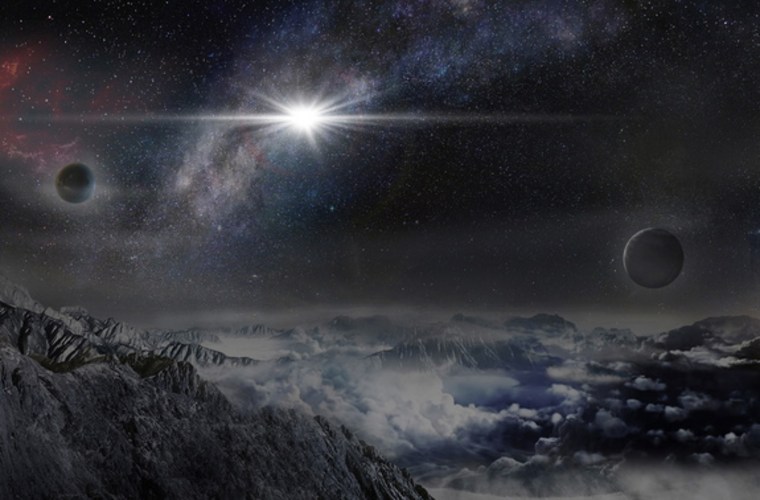A blazing-bright object appears to be the most luminous supernova ever witnessed, and it's blowing the top off researchers' models of how such explosions are powered.
When certain stars reach the end of their fuel supply, or gain a sudden influx of new material, they explode into a brilliant last stand called a supernova. This new object appears to be 200 times more powerful than the most commonly found type of supernova, likely belonging to a rare class of "super-luminous supernovas."

The All-Sky Automated Survey for Supernovae (ASAS-SN) searches for changing spots of light in the sky, and caught the glowing feature when it brightened in June. The researchers announced on Thursday that the bright spot is 3.8 billion light-years from Earth, in the sky at the border of the southern constellations Indus and Tucana.
It can't be seen with the naked eye at this distance — but if this object were 8.6 light-years away like Sirius, the brightest star in Earth's sky, it would appear to shine as brightly as the sun, researchers said. Their research was published Thursday in Science.
Related: Hubble's 'Einstein Cross' Marks the Space-Warping Spot
All told, the object put out about 570 billion times more light than the sun at its peak, and has more than twice the luminosity of the next-most-powerful supernova ever found. (When researchers say "most powerful" here, it's referring to the total radiation blasting out into space.)
Identifying the supernova was only the beginning of the mystery. The researchers are also exploring what could be powering the massive explosion.
A little more than a decade ago, most astrophysicists would have assumed such large explosions only happened in the early universe, when very massive stars were more common, said Avishay Gal-Yam, an astrophysicist at the Weizmann Institute of Science in Israel.
But as the extra-strong supernova were discovered, researchers developed models of how exploding stars could get that extra boost.
One strong possibility, the researchers said, is that this supernova is powered by a "rapidly rotating, highly magnetic neutron star" — that is, a magnetar. When the host star explodes into a supernova, sending gas streaming off into space, it might leave behind a tight, whirling mass of neutrons about the size of a city generating tremendous magnetic power and launching a highly magnetized wind as it slows down.
But the newly found supernova may be too bright even for this explanation — the magnetar at its center would at the very least have to be spinning about 1,000 times per second and generating a magnetic field around 10-100 trillion times the power of Earth's to lead to that level of brightness, which is at the very upper limit the model can support.
Potentially, it could just be a ridiculously massive star that exploded, because heavier stars appear to generate brighter supernovas, the researchers said. If that were the case, a very large amount of heavy, radioactive metal would be created, and the energy from that material's decay would affect the way the supernova fades, giving scientists something to watch for as they study this object.
Or the gas expelled in the supernova could have hit an outer layer of gas and created a shockwave — but the supernova shows no signs of hydrogen or helium, the cloud's most probable makeup, making this scenario less likely.
Understanding these massive explosions is one of the big puzzles in physics today, Gal-Yam said, and this new supernova is useful because it pushes the limits of current models, and can help differentiate between them.
This is a condensed version of an article that appeared on Space.com. Read the original here. Email Sarah Lewin at slewin@space.com or follow her @SarahExplains. Follow us @Spacedotcom, Facebook and Google+.
MORE FROM SPACE.COM
- Supernova CSI - Colorized X-Ray Reveals Star-Killer's Shape | Video
- 10 Biggest Telescopes on Earth: How They Measure Up
- Supernova: Destroyer / Creator
Copyright 2016 SPACE.com, a Purch company. All rights reserved. This material may not be published, broadcast, rewritten or redistributed.
